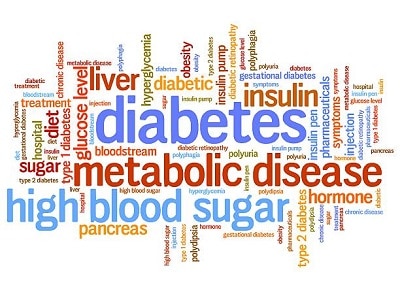
by: Chandler Coleman
According to the CDC, 30 million Americans currently suffer from diabetes. Although, many adults and seniors are unaware of what diabetes actually is and how it affects the body. Diabetes is a disorder of the human metabolism (the way our bodies use digested food for growth and energy), is separated into three main types: type 1, type 2, and gestational diabetes. Only about five percent of all people with diabetes have Type 1 diabetes. Type 1 diabetes usually begins at birth or a very young age. And although type 2 diabetes is treatable, the risk of heart disease and stroke is greatly increased. For those older than 50, diabetes is much more common. It is important to stay active and consult with your doctor about a healthy, balanced diet. Let’s look at what can put you at risk for diabetes and the early onset symptoms that could help save thousands of lives each year.
Who is At Risk for Diabetes?
There are a number of risk associated with diabetes. While some are simply based on an individual’s genes, there are others that relate to lifestyle factors. Research shows being overweight or obese is a top reason for type 2 diabetes. Because of the rise in obesity among U.S. children, this type is affecting more teenagers than ever before. If you are obese, you are also at a high risk of developing cardiovascular diseases, such as high cholesterol and/or high blood pressure. Other factors include a sedentary lifestyle with very little physical activity, as well as a family history of diabetes and your age. As you grow older, your chances of developing type 2 diabetes goes up exponentially.
What are the Symptoms?
Especially during the holiday season, visiting your senior family members, watch for these symptoms, as they are the first indicators that something is wrong. The warning signs of diabetes are very serious and should alert you to seek medical attention immediately. Common symptoms include, but are not limited to:
- Increased thirst
- Increased hunger (especially after eating)
- Frequent urination or urine infections
- Unexplained weight loss (even though you are eating and feel hungry)
- Fatigue (weak, tired feeling)
- Blurred vision
Treatments for Diabetes
Insulin
Patients with diabetes manage their condition by taking insulin multiple times a day. Treating diabetes with insulin shots at regular intervals helps patients avoid serious complications like diabetic ketoacidosis, which stems from inadequate glucose in the blood. Symptoms of diabetic ketoacidosis include head and stomach pain, nausea, vomiting, rapid breathing, reduced alertness, and dry skin.
Medication
Additionally, a doctor may prescribe a medication like Invokana, Jardiance or another SGLT2 inhibitor to be combined with insulin treatment and/or healthy lifestyle choices. SGLT2 inhibitors are a class of prescription medicines that are FDA-approved for use with diet and exercise to lower blood sugar in adults with type 2 diabetes. It is important to talk to your doctor about what medications are safe to use and what treatment is the best for you. Some of these SGLT2 inhibitors, such as Invokana, can have traumatic side effects that can cause serious infections and even lower-limb amputations.
Lifestyle Type 2 diabetes patients can manage the condition through healthy eating and regular physical activity. These treatments also help with gestational diabetes.
How Can You Reduce Your Risk?
The following are preventative measures you can follow to limit your risk of developing diabetes at some point in your lifetime.
- Weight Loss: Since carrying excess weight is a significant risk factor in the development of Type 2 and gestational diabetes, losing weight can help prevent the onset of diabetes.
- Physical Activity: Staying active for at least half an hour, five days per week, greatly reduces the risk of developing Type 2 diabetes.
- Healthy Eating: Eating foods and drinking liquids that are low in calories, fat, and sugar can help prevent Type 2 diabetes, and contributes toward maintaining a healthy weight.
Spend time this November — as it has been deemed Diabetes Awareness Month — discussing the facts about diabetes with your immediate family, and stay up to date with doctors’ visits to find out your odds of developing diabetes at some point in your lifetime. And during the holidays, stay vigile to ensure older loved ones are eating healthy and keeping active. A simple blood test can diagnose prediabetes, which affects millions of people (most of which are unaware of the fact.) This November, spread the word and help save the lives of thousands of adults each year.